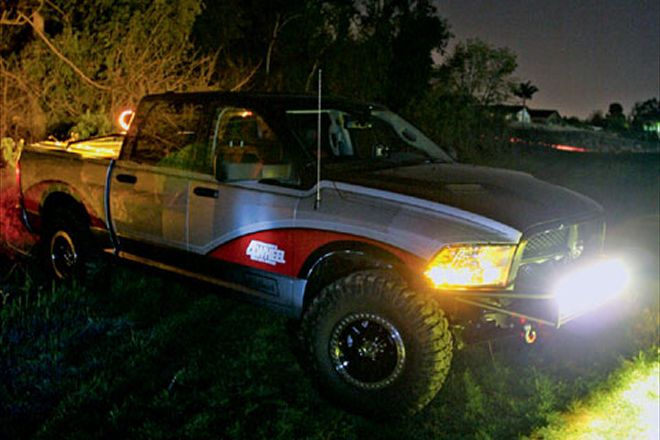
 Fred Williams
Brand Manager, Petersen’s 4Wheel & Off Road
Fred Williams
Brand Manager, Petersen’s 4Wheel & Off Road
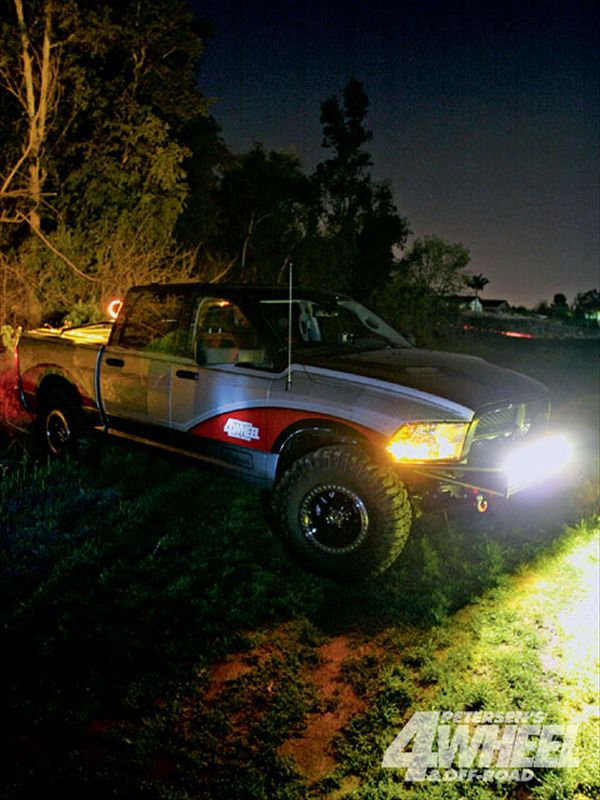
In the last two Back to Basics stories, we concentrated on easy steps for upkeep and upgrades for your 4x4. This month we'll tackle a simple wiring project. Wiring your off-road lights might seem like a no-brainer, but if you don't use your brain you could go from a blazing beam to fire and screams with one quick spark. The trick to wiring lights-or anything on your vehicle, for that matter-is using wire and switches large enough for the load currently required and protecting them the entire way. Recently we outfitted our Black Sheep Dodge project with four Genesis HIDs up front and two rear-facing 140 Lance halogen lights from Lighforce. we'll be showing some of the details of this project as well as some tricks we've seen on other lights.
Before we go any further we must emphasize that every lighting project is different and properly sized wiring, switches, and fuses need to be used. That's why we won't be giving gauge or amperage numbers, as those must be determined for your specific vehicle and electrical load. Rather than having an under-dash wiring meltdown, simply follow the instructions or call the manufacturer or the place where you bought the lights and get their input. If they can't help answer your questions to safely wire in your lights, then we don't recommend purchasing from them again.
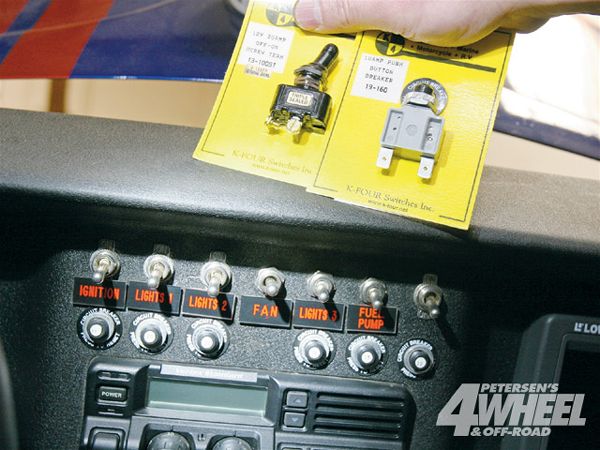
1. This is the most basic wiring system for off-road lights, but it is also not recommended by most lighting companies. This Baja race bug uses switches and circuit breakers and uses a thick wire running from the battery to the circuit breaker (or a fuse), then to the switch, and then to the light. Now you are running more amperage to the dash and then to the lights, which could result in voltage drops, overheating low-amperage switches, melting wires, and possibly fires if the wire rubs through on body panels. If you do go this route, which we do not recommend, use appropriate amperage switches and do not run more than four low-draw HIDs or two standard incandescent bulbs per breaker or switch. Also make sure there is a secondary fuse back closer to the battery for safety.
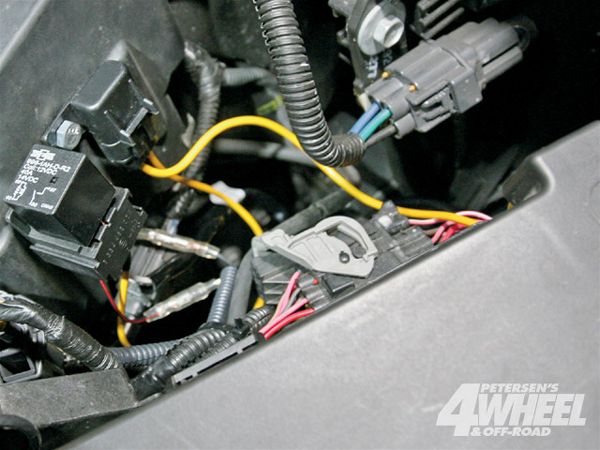
2. Most aftermarket off-road lights come with a wiring harness that actually includes two correlating circuits. One is high-amperage and goes from the battery through a fuse, to a relay, to the lights, and then to ground. The second one is low-amperage and goes from some fused power source, to the switch, then to a relay, and then to ground. The relay is an electric switch that is turned on or off by the low-amperage circuit going to your dash switch. When the low-amperage current from the switch turns on the relay, it makes a distinctive click and connects the heavy amperage current from the fused wire attached to the battery to the off-road lights directly.
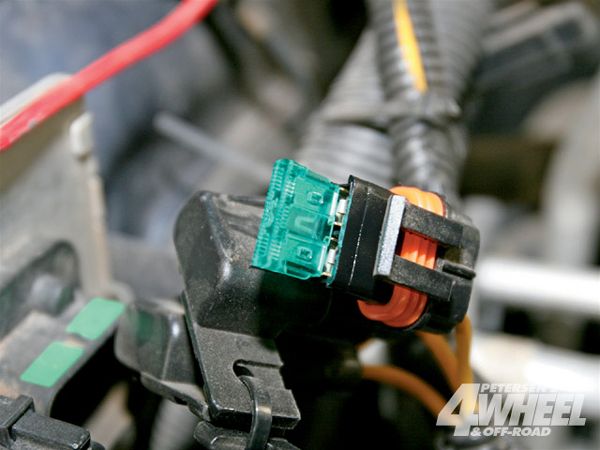
3. The wire coming from the battery going to the relay should have a fuse on it, and that fuse should be as short a distance from the battery as possible. If there is not a fuse or the fuse is mounted far from the battery, then it results in an unprotected circuit, since there is nothing to "blow" or shut off the power if the wire were to short out on a sharp frame or body edge.
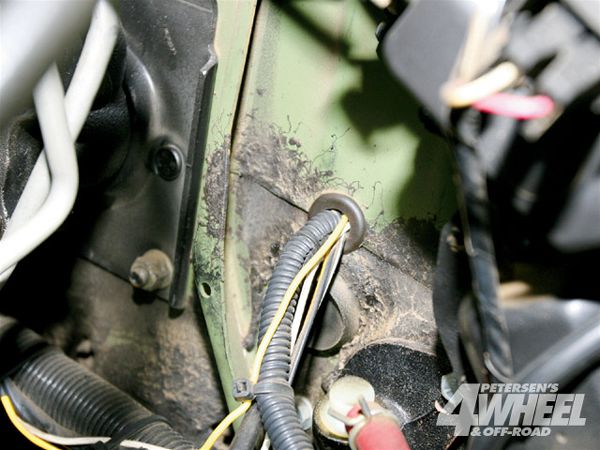
4. It is important to protect any wires running around on your vehicle and to install grommets wherever you have wires running through body panels. Many types of wire looms are available also, so use some to protect your wires.
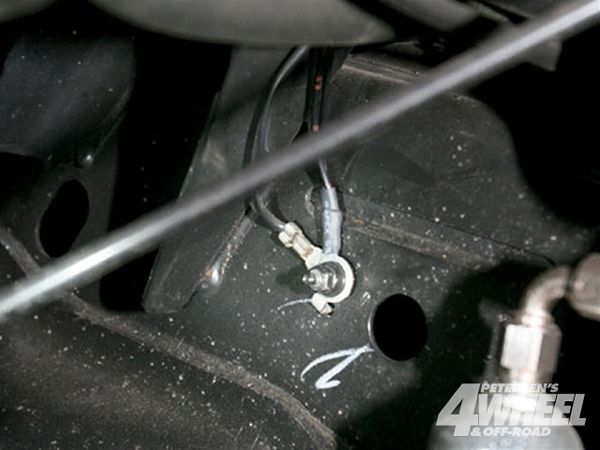
5. After the power comes out of the relay and goes to the light, it must complete the circuit by going to the ground or negative side of your battery. Some off-road lights are self-grounding, meaning their metal bodies are grounded when bolted to a bumper, rollbar, or roof rack. This system works OK, but what if the bumper, rollbar, or roof rack isn't grounded well? We appreciate the additional ground wires coming from the lightweight carbon composite (nonmetal) Lightforce lights better, as we are assured of a quality ground. These grounds can be spliced and wired back to the battery or attached to a factory body ground; we chose the latter form of this ground next to the fuel neck filler for the rear lights, and a similar point under the hood for the front lights.
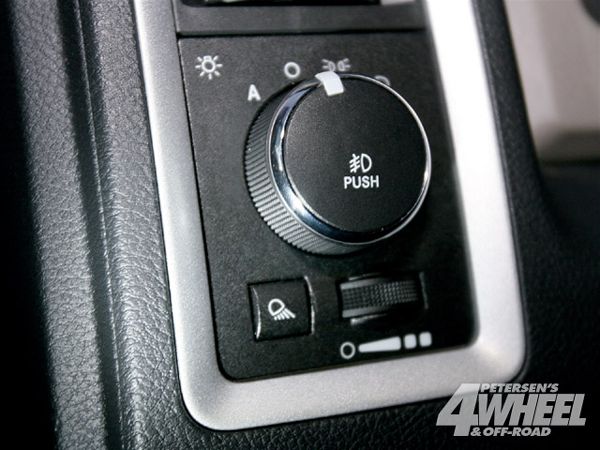
6. On our Black Sheep project we used the front foglight switch to turn on the relay and power our front lights, while the rear bed-mounted lights are turned on by the factory rear bed-light switch on the dash. Neither circuit actually powers the lights; that's done by the larger fused wire from the battery via the relay. In fact some new vehicle like our Dodge have computers that watch how much draw each circuit is using, and when you are outside the allotted amps it shuts off the power. The front four Lightforce HID lights only draw 2.9 amps each when running due to their internal ballast resisters, but they spike up to 4.5 or 5.0 amps when first turned on until they warm up.
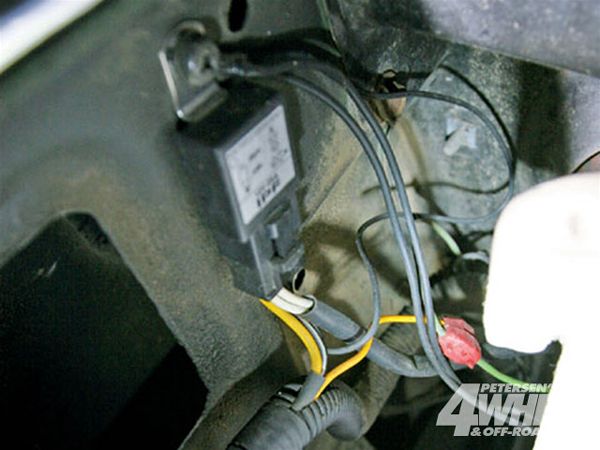
7. The Dodge, like most new trucks, is wired to allow the foglights to be on only when the low beams are chosen, meaning we can't have off-road lights and high beams at the same time. This isn't really a problem as far as visibility goes since the four HIDs outshine both the high and low beams, but it could be a legal issue if we ever forget and run with the HIDs on while on the street. Most off-road lighting companies give instructions to wire in their lights so that they can only be turned on when the high beams are chosen, which is the best way in our view because you can quickly shut off your off-road lights by switching to low beam should oncoming vehicles appear. To do this, simply splice the power to the switch wire to the positive-side wire going to the high-beam wiring. In this photo the green wire is the high-beam power, and the yellow wire is the power to the switch.
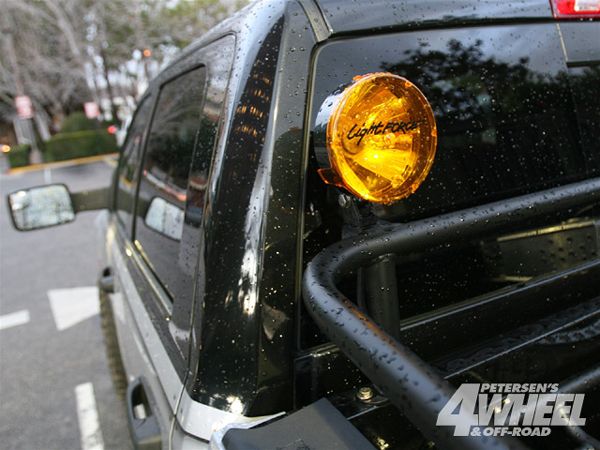
8. Every state has its own rules. Some do not allow off-road lights above the headlights to be uncovered. On our truck we chose amber light covers for the rear deck lights. These lights are common amongst the desert off-road crowd, as many off-road race rules require a rear-mounted amber light. Even with these amber covers we wouldn't recommend turning on these lights in traffic because they will blind any tailgaters. Another option is to wire in rear-facing lights into the reverse lights to give additional rearward light when backing up.